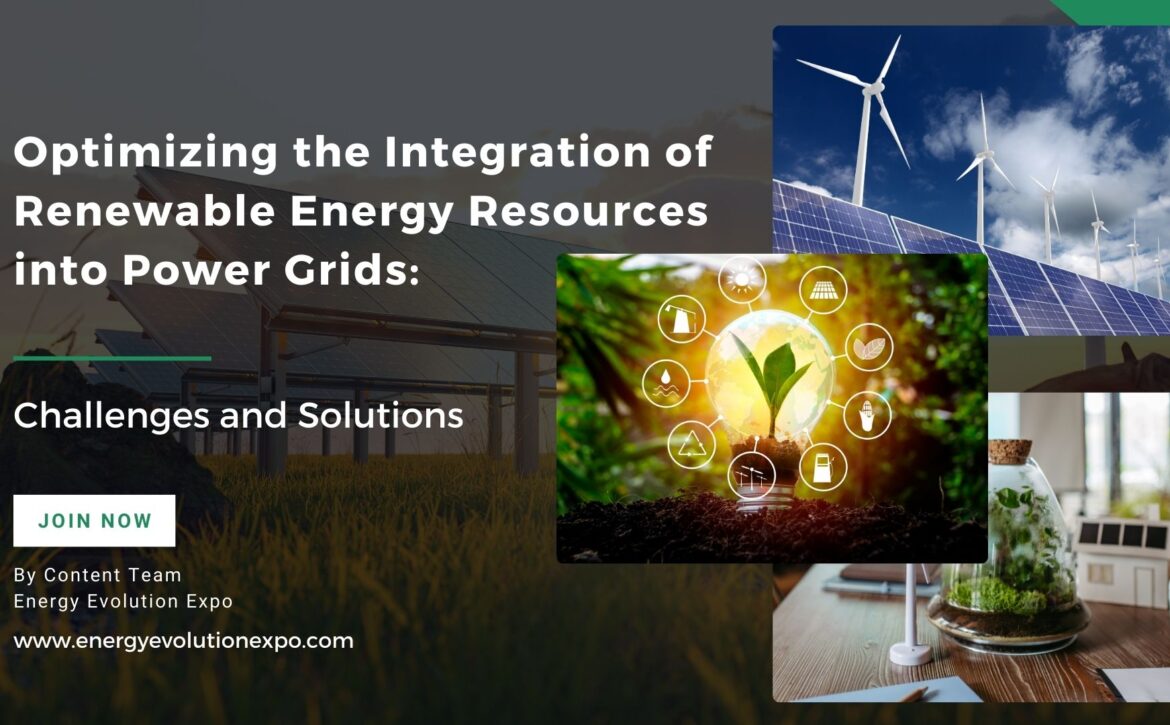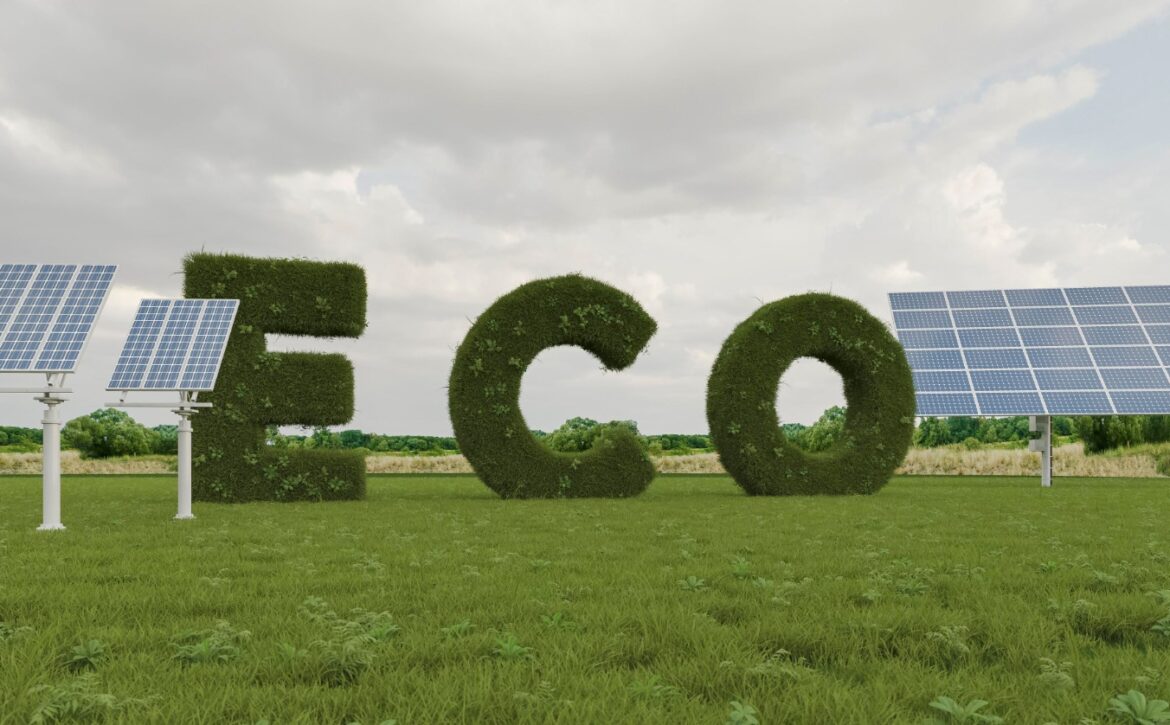Optimizing the Integration of Renewable Energy Resources into Power Grids: Challenges and Solutions
Power grids are the invisible arteries that keep our modern world running smoothly.They are vast networks of interconnected transmission lines,substations, and distribution stations that deliver electricity from power plants to homes, businesses,and industries. Essentially they form the backbone of our energy infrastructure, enabling the reliable and efficient transfer of electricity over long distances.
With an anticipated 40% surge in electricity demand by 2030, followed by doubling until 2050, the pursuit of a cleaner and more sustainable energy transition is imperative. The innovative approach of integration of renewable energy resources (RES) into our power grids paves a way for achieving the goal of a Sustainable energy future.
Grids initially were designed for a slower paced energy landscape and integrating RES presents a multifaceted challenge that requires meticulous planning and coordination to meet the demands of the future effectively.Grid integration involves seamlessly incorporating renewable energy sources, such as solar, wind, and hydroelectric power, into the electricity grid. Unlike traditional power generation, renewable energy generation is variable and intermittent, presenting unique challenges for grid operators.
Here we outline some challenges and their possible solutions of integrating renewables into today’s power grid
1.Variability and unpredictability of renewables:
The integration of renewable energy into power grids poses unique challenges due to the intermittency of generation. Forecasts indicate that by 2050, 62% of global electricity will be generated by renewables, up from 27% in 2019. This growth makes it increasingly difficult for grid operators to plan and manage power flows effectively and avoid grid imbalances.
To address this, grid operators are adopting innovative solutions. They are developing forecasting models that can accurately predict renewable generation based on weather patterns. Additionally, they are implementing smart energy management systems, including AI-powered forecasts and battery storage. These measures help balance supply and demand, ensuring grid stability despite fluctuations in renewable energy production.
2.Grid modernisation:
As transmission and distribution lines worldwide near the end of their lifespans, the challenge of distributing electricity over long distances becomes more pronounced due to increasing energy losses. However, the cost of installing new lines for grid modernization is substantial, especially considering the need for infrastructure to support the integration of renewable systems in remote areas.
One solution involves promoting the adoption of distributed systems such as rooftop solar panels and small wind turbines. By enabling households and businesses to generate their own electricity, these systems reduce the amount of electricity flowing through the power grid, thereby decreasing transmission losses and extending the lifespan of aging power lines.
To implement this solution effectively, grid operators must collaborate closely with policymakers to establish new regulatory frameworks for infrastructure development. This collaboration is essential for facilitating the widespread adoption of distributed energy systems and ensuring the modernization of grid infrastructure to support the clean energy transition.
3. Frequent power outages:
In regions like the US and Australia, blackouts often result from extreme weather conditions, while South Africa grapples with a worsening energy crisis due to an aging power infrastructure. Prolonged power outages not only disrupt businesses but also pose risks to electronic devices and critical data.
To address these challenges, implementing backup sources and distributed systems, such as battery storage for renewable generation, is crucial. These solutions help maintain uninterrupted power supply during emergencies, mitigating the impact of blackouts on businesses and safeguarding electronic equipment and data from damage or loss.
4.Electromobility:
The rise of electric vehicles, although beneficial for reducing carbon emissions, adds a new layer of demand to electricity supply from power grids.
To address this challenge, smart grids play a pivotal role. They employ real-time data analytics to manage various connected devices, including EV chargers, solar panels, batteries, and other equipment. This ensures efficient allocation of supply to the most critical equipment.
Additionally, grids can integrate technologies like tap changers, switching capacitors, and line regulators, along with battery storage systems, to manage bi-directional power flows effectively. These measures help mitigate significant voltage fluctuations on the grid, ensuring stable and reliable electricity supply amid the growing demand from electromobility.
5.Security Threats:
The digitalization of the energy sector elevates its susceptibility to cyber and terrorist threats, as evidenced by the surge in attacks in 2022. Energy companies worldwide, including Ignitis in Lithuania, Energoatom in Ukraine, and DESFA in Greece, fell victim to cyberattacks, while the US experienced an uptick in physical assaults on power substations.
To mitigate these risks, solutions such as microgrids, distributed generation, and blockchain databases are crucial. These technologies help prevent a single point of attack from disrupting the entire energy system.
Despite facing challenges like the variability of renewable energy, the necessity for new infrastructure development, grid stability concerns, and ensuring security of supply, power grid operators can navigate the clean energy transition effectively. Collaboration with technology providers, policymakers, and stakeholders is key to implementing smarter, more resilient grids.
Here is an overview of how some companies are using grid integration of renewable energy.

1.Siemens: Siemens is a global leader in electrification, automation, and digitalization. Their grid integration solutions include advanced grid management systems that enable real-time monitoring and control of renewable energy sources. Siemens also provides smart grid technologies such as advanced sensors, communication systems, and software solutions to optimize grid operation and accommodate the variability of renewable energy generation.
2.ABB: ABB specializes in power and automation technologies. Their grid integration solutions focus on grid automation and control, power electronics, and energy storage systems. ABB’s grid automation solutions enable utilities to efficiently manage the integration of renewable energy into the grid by providing real-time monitoring, control, and optimization of grid assets. Additionally, ABB offers power electronics solutions such as FACTS (Flexible Alternating Current Transmission Systems) and HVDC (High Voltage Direct Current) systems to enhance grid stability and reliability in the presence of renewable energy sources.
3.GE Renewable Energy: GE Renewable Energy provides a wide range of grid integration solutions tailored to the needs of renewable energy projects. This includes grid management software that utilizes advanced analytics and machine learning algorithms to forecast renewable energy generation and optimize grid operation. GE also offers grid-scale energy storage solutions such as battery storage systems and pumped hydro storage to store excess renewable energy and provide grid balancing services when needed.
4.Schneider Electric: Schneider Electric is a global leader in energy management and automation solutions. Their grid integration offerings include microgrid solutions that enable the integration of renewable energy sources at the local level, providing communities with greater energy independence and resilience. Schneider Electric also provides grid automation solutions such as advanced distribution management systems (ADMS) and renewable energy management systems (REMS) to optimize the integration of renewable energy into the grid and ensure grid stability and reliability.
5.Enel X: Enel X is a leading provider of demand response and energy management solutions. Their grid integration solutions focus on demand-side management, energy storage, and advanced forecasting tools. Enel X’s demand response programs incentivize energy consumers to adjust their electricity consumption in response to grid conditions, helping to balance supply and demand and integrate renewable energy more effectively. Additionally, Enel X offers energy storage systems and advanced forecasting tools to mitigate the variability of renewable energy generation and ensure grid stability and reliability.
6.Vestas: Vestas is a global leader in wind energy solutions. In addition to manufacturing wind turbines, Vestas also offers grid integration solutions such as advanced wind power forecasting, grid-friendly wind turbine controls, and grid compliance services. These solutions help optimize the integration of wind energy into the grid and ensure grid stability and reliability.
7.Sunrun: Sunrun is one of the largest residential solar and energy storage companies in the United States. Sunrun offers solar + storage solutions that enable homeowners to generate and store their own renewable energy. Through virtual power plant (VPP) programs, Sunrun aggregates distributed energy resources (DERs) from its residential customers to provide grid services such as demand response and grid balancing, contributing to grid integration of renewable energy.
8.Tesla: Tesla is known for its electric vehicles, but it’s also a major player in energy storage and solar energy. Tesla’s Powerwall and Powerpack energy storage systems can be deployed at both residential and utility-scale levels to store excess renewable energy and provide grid services such as frequency regulation and peak shaving, supporting the integration of renewable energy into the grid.
9.NextEra Energy: NextEra Energy is a leading renewable energy developer and operator in the United States. Through its subsidiary, NextEra Energy Resources, the company develops and operates wind, solar, and energy storage projects. NextEra Energy also owns and operates one of the largest transmission and distribution networks in North America, which enables the company to integrate renewable energy into the grid and deliver clean energy to customers efficiently.
10. GridPoint: GridPoint provides intelligent energy management solutions for commercial and industrial customers. Their solutions include energy monitoring and control systems, demand response programs, and energy storage integration. GridPoint’s technology helps businesses optimize their energy usage, reduce costs, and support grid stability by enabling dynamic load management and participation in grid services.
These companies employ a combination of technologies, expertise, and services to address the challenges of integrating renewable energy into the grid, ultimately helping to accelerate the transition to a more sustainable and resilient energy system.
These companies, along with others in the renewable energy and energy management sectors, play essential roles in facilitating the integration of renewable energy into the grid and advancing the transition to a more sustainable energy future.
Many Countries have started the implementation of the solutions discussed above in one way or the other. For a better understanding let us look into some case studies:
Case Study: California’s Renewable Energy Integration
Exploring California’s endeavors to seamlessly integrate substantial volumes of solar and wind energy into its grid via energy storage, demand response, and grid modernization initiatives.
+
Case Study: Denmark’s Renewable Energy Transition
Delving into Denmark’s effective shift towards renewable energy, which encompasses the utilization of offshore wind farms, district heating systems, and interconnections with neighboring nations to harmonize supply and demand across the grid.
Case Study: India Renewable Integration Study
An NREL grid integration study has confirmed the technical and economic viability of integrating 175 gigawatts(GW) of renewable energy into India’s electricity grid by 2022.
Grid integration of renewable energy represents a critical step towards achieving a sustainable energy future. By addressing challenges through innovative strategies such as energy storage, demand response, smart grid technologies, and grid modernization, we can maximize the benefits of renewable energy while ensuring grid reliability, stability, and resilience.
Collaboration among stakeholders, investment in infrastructure, and supportive policies are essential to overcoming barriers and accelerating the transition towards a cleaner, greener grid. To facilitate understanding of latest development and trends in the Renewable energy Industry, various Conferences and Expos, which bring the Industry leaders together, are crucial. The Energy Evolution Awards, Conference and Expo organized by Next Business Media is making its debut in Spain in 2025.
It will be a leading forum dedicated to honoring excellence in Energy Technology, showcasing innovations and fostering collaborations. The events unite industry leaders , visionaries to explore the latest advancements, tackle key challenges and shape the future of Energy. The Energy Evolution Awards, Conference and Expo will celebrate outstanding achievements, promote sustainable practices, and drive the Energy Industry forward into a technologically advanced sustainable era. Energy Evolution Awards, Conference and Expo will be a platform for cultivating innovation and shaping a brighter, more efficient energy landscape.




